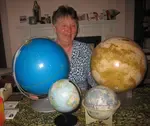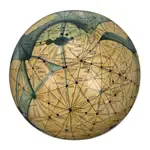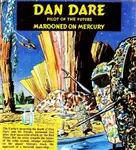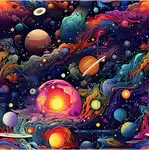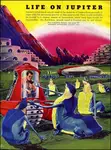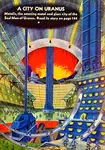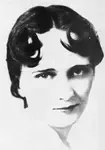- Home
- >>
idea for another site:
the stellar neighbourhood
[ + link to: An Unorthodox World ]
Here's a suggestion for another website, on the lines of this one but for the "nearby" interstellar scene.
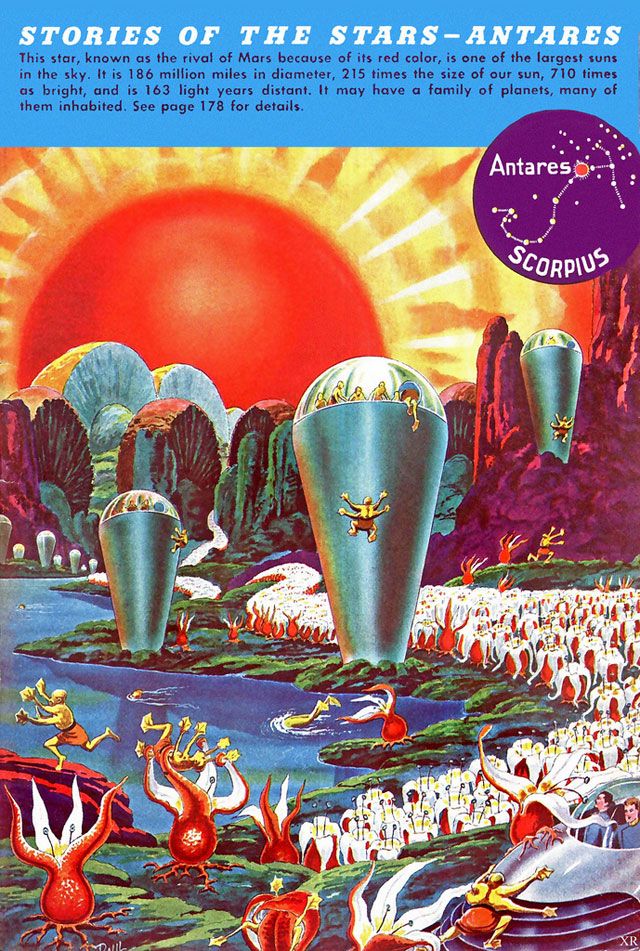
Stid: Wait, before you go on: how near is "nearby"? That word - in the absence of any natural frontier - isn't going to save the proposed new site from dissipating into generality as it rambles off into the interstellar vastness... unless, somehow, you give it shape.
extent
Zendexor: I was thinking, "stellar neighbourhood" could mean "out as far as the most distant named star."
Stid: Ah, the familiar folkloric stars. Sirius, Procyon, Vega, Arcturus and so on, all the way out to Deneb. Naturally at the bright end of the scale, with high intrinsic luminosity, spectral type F, A or B, these stars are precisely the ones most likely too hot and short-lived to have planets with intelligent life; on the other hand they do have instant name-glamour, and I can visualise, now, the kind of website we're most likely talking about: a celebration of all that cutely unrealistic sf featuring planets and aliens around Rigel and Betelgeuse and so on. You're going to have fun, Zendexor.
Zendexor: I'm not, but someone is, I hope. I'm throwing the suggestion into the arena, in the hope that it will be picked up by a webmaster with more time to spare than I have.
Harlei: Stid, you mentioned Deneb, but isn't that a bit far for the "neighbourhood"?
Stid: Not a bit of it! 2500 light-years away; that's only one fourtieth the size of the Galaxy. Stars with names are all close by as galactic distances go.
Zendexor: I agree with Stid here: you could count Deneb as the "stellar neighbourhood". You could, in fact, regard it as the frontier. That would permit the inclusion of some famous nebulae and star clusters within the site's permissible range. You could then have pages on the Pleiades (see Samuel R Delany's Nova) and the Horsehead Nebula (see Asimov's The Stars Like Dust)...
Stid: Before we get carried away, might I suggest an alternative? Doubtless the Sun was born alongside other stars in a molecular cloud... Don't tell me, I know, that association has long since dispersed. But - might it have left traces? Wisps of slightly greater than usual concentration in the interstellar medium? You could use that as an excuse for a smaller range... say as far as Aldebaran.
Zendexor: A nice idea, but forget it, Stid. The Rigellians and Denebians would be up in arms - it would never do. Let's not exacerbate interstellar tensions. Rather, let's draw up a preliminary list of sources to give a start to the site... always in the hope that someone might take up the suggestions and add to them.
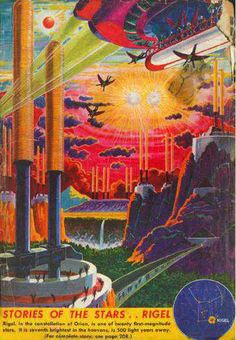
named stars
The sources listed here are of literary references to stars which have proper names. The stories don't always have scenes actually set around those stars; e.g. Wasp is set in the Sirian Empire, not at Sirius itself; but it thereby shows that star's importance. Similarly there's not much about Vega in Agent of Vega, but you feel it somehow... So anyhow, here's a preliminary listing. I'll no doubt be adding to it as more stuff occurrs to me.
Achernar - Edmund Cooper, Transit
Alcyone - Hal Clement, Cycle of Fire; planet Abyormen.
Aldebaran - E E 'Doc' Smith, Galactic Patrol, in which the Lensman meets the Wheelmen of Aldebaran I. Clifford D Simak, Time And Again, in which reported deaths on Aldebaran XII are an ominous worry for an administrator on Earth.
Algol - H P Lovecraft, Beyond the Wall of Sleep.
Alioth - Clark Ashton Smith, The Ocean World of Alioth (synopsis and draft of opening)
Altair - Hal Clement, Close to Critical; the film Forbidden Planet (set on Altair IV);
Leigh Brackett, The Woman From Altair.
Antares - Edmond Hamilton, Kaldar, World of Antares; The Star Kings and Return to the Stars; and Starman Come Home / The Sun Smasher; Donald Wandrei, The Red Brain.
Arcturus - David Lindsay, A Voyage to Arcturus; planet Tormance.
Canopus - Frank Herbert, Dune; planet Arrakis. Has the planet which is the seat of the Council of Suns in Edmond Hamilton's Within the Nebula; and the planet Throon, capital of the Mid-Galactic Empire, in the same author's The Star Kings and its sequel Return to the Stars.
Capella - Jack Vance, Emphyrio; planet Maastricht.
Deneb - source of the peril to humanity in Sentinels From Space by Eric Frank Russell.
According to the later Captain Future stories, the people of Deneb were (alas for those of us fed up with COMOLD) the fountainhead of humanity, ancestors of all the humanoid races in the universe.
Fomalhaut - Edmond Hamilton, The Star Kings and Return to the Stars.
The Hyades - Edmond Hamilton, Doomstar.
Mira - John W Campbell, The Ultimate Weapon.
Polaris - Clark Ashton Smith, The Red World of Polaris.
Procyon - John and Dorothy Cowey, Goma's Follicles (for Procyon IV); Edmund Cooper, Seed of Light (for Procyon II). The interstellar generation-ship in Brian Aldiss' Non-Stop has been to Procyon.
Rigel - John Brunner, The Long Result; Eric Frank Russell, Next Of Kin; Jack Vance, the Demon Princes series (for the 'Rigel Concourse': 26 planets, the initial letters of their names running from A to Z); Edmond Hamilton, Starman Come Home / The Sun Smasher.
Sirius - Larry Niven, The World of Ptavvs, planet-sized moon Jinx; Eric Frank Russell, Wasp, planet Diracta; Jack Vance, Space Opera,the "Sirius Planet" episode; Robert G Temple, The Sirius Mystery (perhaps the most respectable of "Alien Visitors" speculations); Edmund Cooper, Seed of Light (in which a generation-starship from Earth visits a planet that turns out to be deadly); John Coleman Burroughs and Hulbert Burroughs, The Lightning Men, planet Nova Terra.
Vega - James Blish, Earthman, Come Home features the sinister Vegan Orbital Fort; James H Schmitz, Agent of Vega - planet Jeltad; Jack Vance, the Demon Princes series (planets Aloysius, Boniface, Cuthbert); the friendly Hazers of Clifford Simak's Way Station come from Vega XXI; the general in Edmond Hamilton's Battle for the Stars has a home on Vega Four; and Vega figures largely as an advanced governing world in Heinlein's young-adult novel Have Spacesuit - Will Travel. An interesting non-organic intelligence inhabits the minerals of Vega Five in John Rackham's Computer's Mate.
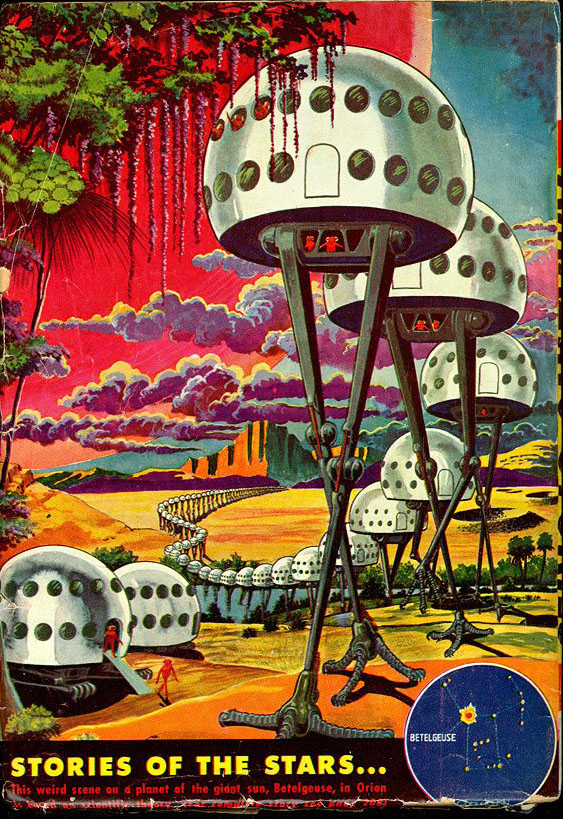
designated stars
This section is for stars which are referred to by designation - i.e. a Greek letter plus the genitive of the constellation, or other identifier. Authors keener on scientific plausibility, who would turn up their noses at the thought of setting their tales around Vega, are likely to be happier with Tau Ceti or Epsilon Eridani.
Alpha Centauri - Leigh Brackett, Alpha Centauri or Die! Larry Niven and Jerry Pournelle, Footfall. A E van Vogt, Far Centaurus.
Beta Centauri - Poul Anderson, A Sun Invisible.
61 Cygni - Clifford D Simak, Time and Again.
e Eridani - for planet Rustum, see Poul Anderson's Orbit Unlimited (one of his very finest novels).
Eta Piscium - for the planet Kolama in Jack Vance's Magnus Ridolph story The Spa of the Stars; Vance refers to it as "Eta Pisces".
Pi Aquarii - for the planet Moritaba in Jack Vance's The King of Thieves, a Magnus Ridolph story to be found in the collection The Many Worlds of Magnus Ridolph.
Pi Sagittarii - for the planet Kokod in Jack Vance's The Kokod Warriors, one of his tales featuring the detective / troubleshooter Magnus Ridolph.
Proxima Centauri - the tale of that name by Murray Leinster. Plus Now Wait for Last Year by Philip K Dick.
S Doradus - The Storm by A E van Vogt. Note that this superluminous giant star is in the Large Magellanic Cloud, though in the van Vogt tale it's placed incorrectly in the Lesser Cloud. Either way, it's not what we usually think of as the stellar neighbourhood; yet because of its brilliance it stands out sufficiently to have been given an individual designation.
Tau Ceti - John Greer, Star's Reach ; Ursula LeGuin, The Dispossessed.
themes
So far, we've sketched out an idea for a site in which, just as Solar System Heritage is about the literary characters of worlds in our System, the Stellar Neighbourhood Heritage would mainly consist in exploration of the characters of various well-known, named stars.
Here are some further thoughts regarding themes to be pursued.
You could explore "crosswise"... e.g. in thematic pages on "Type A Stars" or "Type F Stars", etc. Poul Anderson's Hunters of the Sky Cave is a memorable attempt to portray life forms which evolved (if I remember correctly) round an F star.
A page on Dark Nebulae... e.g. the
Coal Sack and the Horsehead; Niven
and Pournelle's The Mote in God's Eye as well as Asimov's The Stars Like Dust; and the good old villains from the Dark Nebula in Edmond Hamilton's The Star Kings.
Of course you'd want a whacking great page on Niven's Known Space series, a topic tailor-made for a Stellar Neighbourhood site.
modernity
Stid: Well, your eyes are lighting up as the ideas start to flow, Zendexor! Looks like quite a job, but you're no doubt eager to wade into it. I wish you every success.
Zendexor: I told you, I have no absolutely intention of undertaking the project myself. Looking after the OSS is more than enough for me without the OSN as well. I'm simply sketching out some of the possibilities, so that someone else may take them up. But if that does happen, I'd be happy to support the new site with contributions.
Harlei: "OSN", you say? Not the New SN too?
Zendexor: Ah, now that's a point. A vital point, which I could have made at the start. Do we actually need the word "Old" here? No, actually we don't! Our current dreams still envelop the stars! Space probes haven't snapped away the romantic views of the stars as they have those of the planets. (And in John Greer's view, they never will, because we'll never really get out there.) Even the old ideas of life around Vega and Sirius might be true after all. So we're in the happy position of being able to avoid contradictions to all our visions of what those stars' worlds may be like.
Therefore - the Stellar Neighbourhood, pure and simple. Not the "O" SN, but the SN, full stop! Though admittedly some of the literature is delightfully old-style...
extracts
alcor:
...The narrative which presently we shall proceed to relate concerns certain findings reported by the ship Caduceus of Alcor, out of Alcorhaven...
[Blue Moon (1942)]
alcyone:
...the Pallas Technical Institute, at Pallas, Alcyone...
[The Book of Dreams (1981), p.48]
aldebaran:
From Time And Again, p8:
...he wondered about the blackened bodies lying on the riverbank on far-off Aldebaran XII and the twisted machine that was wrapped around the tree.
Three humans had died there... three humans and two androids, and androids were almost human. And humans must not die by violence unless it be by the violence of another human...
...A smashed machine and broken bodies and a great smoking gash sliced across the turf. The silver river flowed in a silence that one knew was there even in the photograph and far in the distance the spidery web of Andrelon rose against a pinkish sky...
From Time is the Simplest Thing, p123-4:
The shed... was surrounded by a high, rank growth of dead, dried weeds... It was built of the corrugated metal sheets which had been much in use for buildings of this sort before the introduction some three-score years before [of] the putty-plastic from Aldebaran VII...
From The Seed of Evil:
...Neverdie had settled quite well into human society... His needs were financed out of the returns from his books. Julian had studied them all assiduously, especially the lengthy Aldebaranian Social Organisation, but had learned nothing useful. He was not interested in how an extinct species formed 'hedonistic rank-order', as was apparently the case...
From Bring Back Yesterday:
...I heard the blonde babbling about Vegan fire trees and Aldebaran singing vines and all the rest of them; evidently she was a keen horticulturist...
From Valley Beyond Time:
...The humanoid aliens of Aldebaran were the coldest of races, fierce savage men who hid festering evil behind masks of outward urbanity. Some of the outworlders referred to the Aldebaranians as devils, and they were not so far wrong...
...Like all his race the Aldebaranian was well fleshed, a man of middle height and amiable appearance, with pouches of fat swelling beneath his chin and under his ears. He was gray of skin and dark of eye, with gleaming little hooked incisors that glinted terrifyingly when he smiled. He had extra thumbs on each hand, and Thornhill knew there were extra joints in his limbs as well...
algenib:
...Long Parade, Espandencia, Algenib IX...
[The Book of Dreams, p.48]
algol:
"I've got something for you," Irving told him. "We're starting a new magazine, aimed at the tribes out in the Algol system. They're a primitive sort of people, but they can read, Lord love them. We had the devil's own time finding someone who could do the translations for us and it'll cost more than we like to pay to have the type set up. They got the damnedest alphabet you ever saw. We finally found a printer who had some in his fonts..."
[So Bright the Vision (1956)]
alioth:
The world was the fourth of a system of seven planets that circled the great sun known as Alioth to astronomers. In their approach from outer space, the cosmic voyagers had chosen it for investigation with a view to finding fresh food... However, as they neared it, the planet was seen to consist entirely of oceans, apart from seemingly barren patches of land at the poles, and a few tiny islands... [The Ocean World of Alioth]
alpha centauri:
"...permit me to welcome you to the four planets of Centauri. It is a great moment for me, personally. From early childhood, I have been trained for the sole purpose of being your mentor and guide; and naturally I am overjoyed that the time has come when my exhaustive studies of the middle period American language and customs can be put to the practical use for which they were intended."
He didn't look overjoyed. He was wrinkling his nose in that funny way I had already noticed...
[Far Centaurus (1944)]
...By nine or nine-thirty that night he had gathered the essential facts about the solar system of Alpha Centaurus [sic]. There were five planets, two of them temperate and easily habitable, one of them showing strong hints of extensive heavy metal ores. The trip had been uneventful, the stay unmarked by extraordinary incident. There was no mention of inhabitants... [Silent Brother (1956)]
Damn them! he thought for the hundredth time. Damn the fantastically decadent Centaurians, anyway! They never told lies. It was biologically - or psychologically, he didn't know which - impossible for a Centaurian to tell a lie. On the other hand, Haven remembered from bitter experience, a Centaurian could refuse to answer you altogether. That was usually their way out. They were the most close-lipped people in the galaxy. There were no courts of law on Centauri: there could not be, for no one would testify agaist anyone else. The only retributive system they had was that of vendetta. It almost seemed incredible to Haven that Centauri VII had been admitted into the stellar confederacy at all...
...A team of six-legged creatures drew the ice-sled silently through the night. They climbed steadily into the ice hills. Centauri had set, but little Proxima, Centauri VII's tiny second sun, was on the horizon and gave dusky light perhaps twice the brightness of Earth night at full moon...
[Centauri Vengeance (1956)]
"...Alpha A has two habitable planets, Thor and Freyja. Alpha B has two semi-poisonous ones slowly being made habitable. Proxima is a dim red dwarf with one inhabited planet, the frigid giant Thrym... The Thorians conquered and assimilated the men of the other worlds long ago. They established contact with the Thrymans, showed them modern technology; soon the natives - already highly civilized were equal to their teachers. Then Thrym denied them right to settle the Proximan System. A war was fought over it, which ended officially in compromise and unification; actually, Thrym had the upper hand, and its representatives occupy key positions in the League..."
[The Long Way Home (1955), p.79]
alphard:
...he'd spent other years in studying that nameless science stemming from the thaumaturgists of Alphard XII... [Way Station, p.78]
...He stood rigid, with her hand upon his arm.
The flashing light! he thought. The pyramid of spheres!
For now he remembered who had given it to him - one of those aberrant races of the Alphard system. And it had been from the literature of that system that he had learned the art of fairyland. They had tried to help him by giving him the pyramid and he had not understood...
...It was the fixation agent that banished all illusion, that made a fairyland for real...
[ibid., p.205]
altair:
"...we find the strangest life forms. Remember the Chunquen?"
"Both sexes were sentient. They fought constantly."
"And that funny religion on Altair One. They thought they could travel in time."
"Yes sir. When we landed the infantry they were all gone." [The Warriors]
...Altair I had been recognized at once by the Trading Commission as a commercial prize of tremendous value, but early reports had warned of the danger of wildcat trading on the little, musty, jungle-like planet with its shaggy, three-eyed inhabitants...
[Letter of the Law]
Alayne, a girl from Buzenborg, a small province on the southernmost continent of Altair VI, comments on her rival:
"...You see, Muggenwort is a small matriarchal province near the Altair VI equator, and their mating customs are as different from ours as they are from yours. All Muggenwort women have to have four husbands in order to be accepted into Muggenwort society, and as there are no longer enough men in Muggenwort to go around, they have to travel to other planets to get them. But that's not the worst of it. After they capture them and bring them back to Muggenwort, they put them to work twelve hours a day in the kritch fields while they lie around all day in their air-conditioned barkenwood huts chewing rutenstuga nuts and watching TV!"
Roger was more amused than angry now. "And how about the husbands? I suppose they take to all this docilely and don't mind in the least sharing their wife with three other men!"
"But you don't understand!" Alayne of Altair was becoming more agitated by the second. "The husbands have no choice. They're bewitched - the same way Becky is bewitching you..."
[The Girl Who Made Time Stop (1961)]
"...There was a determination from the beginning to make it one universe. No separate nationalistic groups, no chance of wars. The governing council was set up at Altair Two. Every world was represented. There are twenty-nine of them, now..."
[The Stars, My Brothers (1962)]
antares:
...Of all the stars in all the countless host that once had spotted the heavens, there remained only Antares. Antares, immensest of the stars, alone was left, the last body in the universe, inhabited by the last race ever to have consciousness, ever to live... [The Red Brain]
...Banning began to piece together a vague picture, an undreamed-of cosmic history.
The Old Empire, the Empire of the Valkars! They had ruled it from Katuun at Antares, their starships had webbed the galactic spaces, and the peoples of a myriad suns paid tribute to their power... [Starman Come Home]
...Merrick could see in the light of the two risen red moons that the giant peaks of the range were of a height unknown on earth, and that the great range itself was surprisingly regular in its circular shape. In the clefts between the mountains was white snow, but there was none on the great peaks, for they and the gigantic chasms and cliffs gleamed as though glassy-smooth, black and awesome masses.
"They look as if they were of black metal," Merrick commented to the men beside him, and was amazed at Holk's answer.
"They are metal, O Chan..." [Kaldar, World of Antares]
...Planet Five of Antares was a hellish, hot, reeking place with an atmosphere so lethal that one breath of it would swiftly have killed a man. But 4-2-5's kind were not men. Their flesh was of a porous, silicous composition, breathing and living in a different way than any flesh native to Earth. Hideous, hard-shelled things, 4-2-5's kind crept through the shadowy jungles of their world, and dwelt there in a strange luxury...
[Hotel Cosmos]
arcturus:
He read the titles of a few of them: 'Basic Statutes of Arcturus XXIV'...
[New Folks' Home]
"The Arcturus math, you mean," said Enoch. "I know little more than when I told you of it. It is too involved. It is based on behaviour symbolism..."
[Way Station]
...the surface of Arcturus III was close under them, shaggy with forests and humped with mountains like the back of some monstrous beast...
[Fugitive of the Stars, p.28]
...He thought nostalgically of the other pleasant periods he had spent in the long spell of his existence. Of the fair civilisation beneath the blood-red Arcturus sun where he had recently lived for ten thousand years...
[The Seed of Evil]
"Well, he goes off along a new twail completely. He twies to show that ahcheological wemains on the thuhd planet of the Ahctuwian System show that humanicy existed theah befoah theah wah any indications of space-twavel."
"And that means it was humanity's birth planet?"
"P'haps..."
[Foundation, p.52]
"...One time Howard walked a back street in Bugtown, on Arcturus IV, and a mugger jumped out. Howard asked: 'Are you registered with the Organization?'
"'No, I am not.'
"'Then you'll not get a cent from me...'"
[The Book of Dreams, p.9]
"...The dominant race on Arcturus V is a race of intelligent termites, about two inches long... They produce and trade around the galaxy all sorts of carved wooden goods...
"...there's something about an ordinary lead pencil that makes it a great delicacy here. We grind up a pencil, lead and all, except for the little brass part and the rubber eraser. Some of the termites like it without any rubber. Others like it with the rubber sliced or gound up and sprinkled on, like onion in a hamburger. We serve a pencilburger between two small slabs of ordinary local wood instead of a bun.
They don't give a damn about Terran money if they can get pencilburgers instead..."
[A Flask of Fine Arcturan (1965)]
beta centauri:
...At full quasi-speed, he drove straight for Beta Centauri.
The sun grew and grew before him. Under magnification, he could see the disc, seething with nuclear storms, raging with... prominences, hell-blue and terrible. Eleven times the mass of Sol; fourteen hundred times the luminosity; across a full hundred and ninety light-years, one of the brightest stars in Earth's sky. He tried to whistle a tune, but the sound was too small and scared... [A Sun Invisible]
betelgeuse:
...Startled glances were batted back and forth. Xantippe! No one had ever been to Xantippe! The weird, cometary planet of Betelgeuse was, and had always been, taboo - and for good reason... [Medusa]
...Bropha, who had spent over a year among the Daya-Bal planets in the Betelgeuse region, and during that time had also come under the spell of what was perhaps the youngest true branch of Genus Homo, addressed Zamm, by and large, in her own language...
[The Truth About Cushgar]
...Three of the planets would be directly habitable for man. But on none did they find the great cities they had expected to see. They only saw strange globes of lambent fire darting about...
...At last ten ships were equipped and sent with a scanner machine to Betelgeuse.
Now they courted an encounter with the Force Giants. They were soon satisfied, for thousands of them came at terrific speed the moment they attacked one...
[The Voice of the Void]
canopus:
For all that I had visited it many times before, it was with something of awe that I contemplated the great white sun, as our ship flashed on toward it. Its colossal blazing bulk, I knew, was greater far than the whole of our own little solar system, millions of times larger than our own familiar little star, infinitely the most glorious of all the swarming suns. It seemed fitting, indeed, that at Canopus had been located the seat of the great Council of Suns of which I was myself a member, representing our own little solar system in that mighty deliberative body whose members were drawn from every peopled star... [Within the Nebula]
...The enormous white disk of Canopus was sinking toward the horizon, flashing a supernal brilliance across the scene. In that transfiguring radiance, the peaks and scarps of the Glass Mountains here above the sea flung back the sunset in banners and pennons of wild glory.
And outshining even the stupendous glory of the glass peaks shone the fairy towers of Throon. Domes, minarets, graceful porticoes, these and the great buildings they adorned were of shimmering glass. Mightiest among the structures loomed the gigantic palace on whose high terrace he stood. Surrounded by wondrous gardens, it looked out royally across the great metropolis and the silver ocean beyond.
In the radiant sunset out there over the glittering peaks and heaving ocean there flitted swarms of fliers like shining fireflies... [The Star Kings]
He read the titles of a few of them... 'The Practical Law of Canopus XII'.
[New Folks' Home]
"...Where, to your knowledge, is the most intolerably drunken den of the Oikumene?"
Gersen considered. "Not an easy choice to make. A hundred thousand saloons from Earth out to Last Call clamor for that distinction. Twast's Place on Krokinole can hold its head high, Dirty Red's on the pier at Daisy's Landing, on Canopus III, is another well-known resort..."
[The Book of Dreams, p.149]
...He was talking to a tiny-headed Canopian, one of that retrovolved race that is only a few degrees above the moron level. The Canopian looked as though he was covered with black plush, and his red eyes glowed startlingly through the fur...
..."That halfwit?" Hilton said. "How could he remember a course?"
"That's one thing the Canopians can remember. They may be morons, but they're fine mathematicians. It's their one talent..."
[The Big Night (1947)]
"...as we passed Canopus, they called on us to surrender in the name of their king - and they have a whole war fleet after us!"
[Flight to Forever (1950)]
capella:
...Hors d'oeuvres of Ten Worlds
Broth with Aloe nuts and Water flowers,
in the style of Benitres, Capella VI....
[The Face p.174]
61 cygni:
"The planets are either cloud-covered or screened, for we've never seen the surface of a single one of them. And when you get within a few billion miles of the system you start sliding." He looked at Clark. "That's the right word, isn't it?"
"There's no word for it," Clark told him, "but sliding comes as close as any. You aren't stopped or you aren't slowed, but you are deflected... In the early days, it drove men mad trying to reach the system and never getting a mile nearer than a certain imaginary line..."
[Time And Again]
delta andromedae:
"We are now approaching Delta Andromedae," the voice announced. "It has a planetary system, for two worlds have already been sighted. We shall make a landing, and put you off on the nearest one, in about two hours."
The mutineers felt a sense of comparative relief. Anything, even sudden death from the inhalation of some irrespirable atmosphere, would be better than the long confinement...
[Marooned in Andromeda]
From Astronomy, June 2016, p44:
...In one of his catalogs of non-earthly beings, Flammarion imagined a world Delta Andromedae with an atmosphere heavier than our air but lighter than water. It also had rose-colored, floating citizens with overworked lungs on the verge of collapse who survive by breathing the world's nutritious air...
[Camille Flammarion's Amazing Universe]
delta cephei:
...The Martian North Pole Star is, in fact, what we call Delta Cephei... a variable star.
...A Pole Star is, of course, in a favourable position to become the centre of astronomical legends... To the Martians, already uneasy in their cosmological views, it was a source of considerable psychic discomfort to have their northerly heavens swing around a star as unstable as Delta Cephei... Delta Cephei's regular rise and rfall in brightness reminded the Martians of the even breathing of a sleeper; and in their language it was named Sleeper, or sometimes The Drowsy One...
[The Martian Star-Gazers]
delta pavonis:
...The screen turned and plunged down toward the planet. Green swirls filled it, and then all at once we were among the swirls, in a place where the sky was pale green and big white clumps of something else that might have been clouds drifted past, and there was no ground at all, just green sky above and below and as far as you could see in every direction. Something drifted into sight, something that looked a little like a clump of soap bubbles with a lot of thin feathers dangling down from it, but the feathers were moving and the soap bubbles got bigger and smaller as it drifted on by...
...the voice said, "You cannot visit our world and meet us, but if you could, this is what you would see."
The image drew back, so we could see hundreds of the bubbles-and-feathers things, drifting around in the green sky. "More than four million of your years ago," the voice said, "our species reached the stage of complex technology." Something like a vast heap of soap bubbles and spiderwebs came into sight, glowing with points of light; I guessed it was a city, or something like one. "We made the usual mistakes, and suffered the usual consequences." The image changed; the sky turned brown and murky, and another of the city-things came into sight, torn, lightless, empty. "Our recovery was long and difficult..."
[Star's Reach, p.290]
delta sagittarii:
...Professor Gromley looked more than ever like an owl - and an acutely embarrassed one. "Mr. President," he said hesitantly, "are you familiar with the constellation Orion?"
"Certainly I'm familiar with Orion. I believe, however, that we are now discussing Delta Sagittarii 23."
"Yes, sir," Professor Gromley said miserably. "But you see, sir, from the perspective of Delta Sagittarii 23, Orion isn't Orion at all. That is, the arrangement of the stars that comprise the constellation is very different when seen from their planet."
"All of which," the Chief Executive said dryly, "is extremely interesting astronomical data. I presume it has some tenuous connection with the present topic of conversation - viz., in case you've forgotten, the reason underlying the Staaids' departure." [>>1973]
[Written in the Stars (1957)]
deneb:
...Quickly, the moment the catwalk for passengers was open, I dashed through the hatch and out into the bright, warm air of Deneb City. The giant sun was high above; it was a pleasant spring day.
And then all the pleasantness vanished. I saw the mob...
[The Android Kill]
It would not do to be caught away from his cave, with only the flimsy protection the suit could afford from Deneb's radiation...
Although the planet had much in common with Luna as regarded size, mass, and airlessness, its landscape was extremely different. The daily terrific beatings which it underwent, followed by abrupt and equally intense temperature drops each night, had formed an excellent substitute for weather...
The discovery of animal life - medium-sized, crablike things, covered with jet-black integument, that began to dig their way out of the drifts as the sun warmed them...
[Uncommon Sense]
E ERIDANI:
[Jan Svoboda, colonist, gazes upon planet Rustum, e Eridani II:]
The planet was near half phase. Its shield sprawled across 64 degrees of sky, a great vague circle whose dark half was rimmed in fire where atmosphere refracted sunlight and whose dayside was so brilliant that it drowned the stars. The edges were hazed, but Svoboda could see ghostly auroral banners shaken loose just above the night limb. The basic sunlit color was blue, shading from turquoise to opal. Clouds belted the planet with white, subtle red and gray tints. Beneath them, he could just make out a pair of continents, brownish green splotches. He thought of standing there, under a hard steady pull of gravitation, tasting wind. Rustum grow so beautiful to him that he gulped back tears.
He reminded himself that the surface was dense forest, chill desert, unclimbable scarps, hurricanes, rain, snow, and drought, a hostile ecology, poisonous plants, wild animals. Three thousand isolated humans would not survive without machines and scientific instruments.
Nevertheless he remained staring at it like a modernistic Lucifer...
[Orbit Unlimited]
epsilon aurigae:
...He reached the saurian's five-foot-long head and walked around it, muttering to himself. It was a prize specimen: a faudi reptile from Epsilon Aurigae III, bred here on Earth in the huge, planet-wide game farm...
[World of the Hunter]
epsilon eridani:
See 1960 in the History of Hopes.
The ruthless and super-intelligent machine in The Perfect Secretary (1968) hails from the Squantapecillida Export Institute (Moletrics Ltd), Grimmande, Epsilon Eridani III.
epsilon sagittae:
...Linsil Orq: a lake of the Blissful Plains, Verlaren, second planet to Komred, Epsilon Sagittae...
[The Face]
fomalhaut:
...in the light of the flying moons, the old kings of Fomalhaut stood and dreamed in stone. All the way from the far-flung lights of the city up to this massive palace the great avenue of statues ran, eleven dynasties and more than one hundred kings, all towering up much larger than life so that the envoys who came this way would feel a sense of awe...
[Return to the Stars]
...just let's assume that some race able to traverse space visited Earth. It might have been the people which left ruins on the Fomalhaut planets...
[Star King, p.120]
"He has a distinctive appearance?"
The old man frowned. "Not notably. His ears are rather large, as is his nose. His eyes are round and close together. He is not so old as I. However I have heard that the folk of the Fomalhaut planet mature late, owing to the nature of their food, which clabbers the bile."
"Ah. He was a Sandusker."
"He asserted as much, in an extraordinary fashion I can only describe as vainglory."
[The Killing Machine, p.23]
gamma eridani:
Lencilorqua: a village of 657 inhabitants on Vasselona Continent, Reis, sixth planet to Gamma Eridani. [The Face, p. 21]
iota cancri:
The return address was a mere jumble of dots and hooks and dashes that made no sense but seemed somehow familiar, although Packer at the moment was unable to tell exactly what they were. The stamps, he saw, were Iota Cancri, and he had seen stamps such as them only once before in his entire life. He stood there, mentally calculating what their worth might be... [Leg. Forst. (1958)]
lambda gruis:
...Gersen inspected him with open curiosity. This was the first Star King he had observed as such, though popular belief had hundreds moving incognito through the worlds of man: cosmic mysteries since the first human visit to Lambda Grus [sic].
[Star King]
On pages 119-121 Gersen, in conversation, explains what is known or guessed about the race called Star Kings - sexless and parthogenetic, yet astonishingly manlike in outward form.
markab: [= Alpha Pegasi]
I'm risking the assumption that the "Marhab" of The Book of Dreams, Chapter 2, is actually Markab.
The risk seems worthwhile, for if it's true that by "Marhab" the author meant the star whose designation is Alpha Pegasi, then the reader can assign to that star the whole of the novel's very interesting chapter which is set on the planet called New Concept.
menkalinan [= Beta Aurigae]
...There were some funny stamps, he thought. Like the ones from Menkalinen [sic] that used smells to spell out their values. Not five cent stamps or five dollar stamps or hundred dollar stamps, but one stamp that smelled something like a pasture rose for the local mail and another stamp that had the odor of ripe old cheese for the system mail and yet another with a stink that could knock out a human at forty paces distance for the interstellar service...
[Leg. Forst.]
Mira:
...Mira was so-named by Earthmen because it was indeed a "wonder" star... Irregularly, and for no apparent reason it would change its state of radiation. So far as those inhabitants of Sthor and her sister world Asthor knew, there was no reason. It just did it... When Mira decided to take a rest, Sthor and Asthor froze up, from the poles most of the way to the equators. Then Mira would stretch herself a little, move about restlessly and Sthor and Asthor would become uninhabitably hot, anywhere within twenty degrees of the equator...
[The Ultimate Weapon]
"...What you don't seem to understand is that the Mira planet forest is a green hell. There's nothing like it in the universe we know - unless the Yevd have something similar in their section of the galaxy. The year round it swarms with the progeny of the lymph beast..."
[The Green Forest]
mizar
...He closed the book and sat quietly in the chair, wondering if the statisticians of Mizar X knew of the Thubans' work. Perhaps they did, he thought, for certainly some of the math they used was unconventional...
[Way Station]
"...Thesis for degree in College of Symbology: title: 'The Meaningful Elements in the Eye Motion of the Tunkers of Mizar Six..." [Star King, p.104]
"Consider the Tunkers of Mizar Six... they are a religious group: ascetic, austere, devout to an astonishing extreme. The men and women dress identically, shave their heads, use a language of eight hundred and twelve words, eat identical meals at identical hours - all this to protect themselves from the perplexity of wondering about each other's motivations..."
[Star King, p.108]
Xylla was an e.t. - a native of Mizar X. The natives of Mizar X were remarkable for two things: their gigantic bodies and their diminutive minds. Xylla was no exception. She stood over seven feet tall and she had an I.Q. of less than 40.
But for all her height she was well proportioned, even graceful...
[Goddess in Granite (1957)]
phi ophiuchi:
...Sarkovy, the single planet of Phi Ophiuchi, was a dim world of steppes, swamps, black forests, morasses. The Sarkoy lived in tall wooden houses behind timber palisades... By prctice and tradition the Sarkoy were accomplished poisoners. A Master Venefice reportedly could kill a man merely by walking past him...
[Star King, p.59]
pi cassiopeiae:
Locater-ship estate-houses are to be found in the cosmolitan centres of the Oikoumene, including Pi Cassiopeia's [sic] Copus and Orpo [Star King, p.51]
...Time passed - a week, two weeks. Kokor Hekkus received mention in the news as the presumptive kidnaper of a Copus, Pi Cassiopeia [sic] VIII, mercantilist. Gersen was mildly surprised; the Demon Princes seldom kidnaped for ransom.
Two days later came news of another kidnaping, the scene on this occasion being the Hakluz Mountains of Orpo, Pi Cassiopeia VII; the victim a wealthy packer of sour-spore. Again Kokor Hekkus was reputedly involved; indeed only the possible participation of Kokor Hekkus made the not uncommon crimes noteworthy...
[The Killing Machine, p.21]
the pleiades:
[A view from a nearby star:]
...the stars swarmed and glittered, the seven giant Sisters so brilliant in their nebular hazes that they cast shadows, the lesser members of the cluster and the more distant suns of the galaxy filling the sky with their wintry hordes...
[The Three-Cornered Wheel]
[The Third Co-ordinator of the Vegan Confederacy reflects upon] the College of the Pleiades, a metaphysically inclined body which was linked into the affairs of Confederacy government in a manner the College itself presumably could have defind exactly. Nobody else could....
[Agent of Vega]
polaris:
Burning with preternatural whiteness in the black ether, Polaris broadened hour by hour to a huge incandescent disk. Soon the flames of its corona were visible, soaring in the face of the measureless night; and, falling through the crystalline ports of the ether-ship, its rays mingled weirdly with the violet-tinged illumination of the electric bulbs, and cast their supermundane gleams on the pale faces of Volmar and his crew.
Volmar, peering ahead with aquiline keenness, was the first to see the planets...
[The Red World of Polaris]
"You know notation system used by people of Polaris VII?"
"No, I don't," tapped Enoch.
"Then no use to tell you of our own. Must know Polaris first."
So that was that, thought Enoch. He might have known...
[Way Station]
"...There was no more peace, no more solitude. Then we read in a book, in a spaceman's tale, about a world of Polaris. They said it was a Perfect World. It was written by a Martian named Ilrai..." [Blue Moon (1942)]
"Well, on to business," said Pickering. "I do not mean to waste your time. I was wondering if it were possible you might have Polaris 17b on cover. It's quite an elusive number, even off cover, and I know of not a single instance of one that's tied to cover. But someone was telling me that perhaps you might have one tucked away."
"Let me see, now," said Packer. He leaned back in his chair and leafed catalogue pages rapidly through his mind. And suddenly he had it - Polaris 17b - a tiny stamp, almost a midget stamp, bright blue with a tiny crimson dot in the lower left-hand corner and its design a mass of lacy scrollwork.
"Yes," he said, opening his eyes. "I believe I may have one. I seem to remember, years ago..."
Pickering leaned forward, hardly breathing.
"You mean you actually..."
[Leg. Forst. (1958)]
...It would be necessary, of course, for the Imperial capital to move from isolated Sol to central Polaris...
[Flight to Forever (1950)]
pollux:
The small gray metallic sphere drifted down through the night sky of Pollux V twenty-nine light-years from Earth. The eerie pinkish glow of the two moons glinted softly on the floating sphere...
It dropped gently through the atmosphere on its antigravs toward the dark surface of the planet below... It hovered above the branches of a stand of trees for a moment, shifted course slightly, and settled in a field of grass and shrubs...
[The Marginal Man]
procyon:
[A generation starship has begun its return journey:]
"...So few people left aboard. We are now ten days out from Procyon V. The monotonous years stretch like dead weight before us... [Non-Stop, p.171]
"...Adversity makes thinkers of us all. Only now, when the long journey means no more than a retreat into darkness, do I begin to question the sanity behind the whole conception of inter-stellar travel. How many hapless men and women must have questioned it on the way out to Procyon, imprisoned in these eternal walls!..." [ibid., p181]
From Git Along! (1950), a humorous tale in the Viagens Interplanetarias series, of a crook trying to introduce dude-ranching to an world of saurian sophonts:
"...The most promising planet from my point of view is Osiris in the Procyonic System. The people are reptilian but highly civilized, friendly, with an extreme capitalistic economy, and to Earthly fads and fashions given..."
In The Star Beast (1950) a descendant of pioneer colonists in the Procyon system complains to a high official of Earth about Earth's neglect.
The official replies that "I suppose it was assumed the people there had died off... Space travel became an individual business, and no individual was interested in Procyon." He shrugged, "I'm sorry."
"You're sorry!" Felgi spat the words out. "For nine hundred years our ancestors fought the bitterness of their planets, starved and died in misery, sank back to barbarism and had to slug their way every step back upwards... generation after generation of us - we wrung our needs out of planets never meant for humans... and you're sorry!"
In The New Wine (1954) a pioneering starship returns from Procyon to find catastrophe on Earth. Procyon hadn't been a picnic either; the tale refers to "the nasty landing" on the star's third planet, which lead to a crack in the metal of the navigation room.
proxima centauri:
The Centaurian race had developed from carnivorous plants, as men from carnivorous forebears. But at some early date in man's progression, the worship of gold began. No such diversion of interest occurred upon the planets of Proxima Centauri. As men have devastated cities for gold, and have cut down forests and gutted mines and ruthlessly destroyed all things for gold or for other things which could be exchanged for gold, so the Centaurians had quested animals...
...Three planets of Proxima Centauri were endowed with climates and atmospheres favorable to vegetation and animal life, but only on one planet now, and that the smallest and most distant, did any trace of animal life survive...
[Proxima Centauri]
Brannoch, a human from Alpha Centauri, muses on the topic of the inhabitants of Proxima's world Thrym, as he contemplates a tank containing their representatives on Earth:
It struck him suddenly that he had never seen a Thryman. There were stereographs, but under the monstrous weight of their atmosphere, dragged down by a planet of fifty thousand miles diameter and three Earth gravities, no man could live. Theirs was a world in which ice was like rock to form mountains, where rivers and seas of liquid ammonia raged through storms which could swallow Earth whole, where life based its chemistry on hydrogen and ammonia instead of oxygen and water, where explosions of gas burned red through darkness, where the population of the dominant species was estimated at fifty billions and a million years of recorded history had united them in one inhuman civilization - it was not a world for men, and he wished sometimes that men had never sent robots down to contact the Thrymans, never traded instruction in the modern science which alone was able to maintain vacuum tubes against that pressure, for their chemicals.
He considered what was going on inside that tank. Four thick disks, six feet in diameter, slaty blue, each stood on six short legs with wide, clawed feet; between each pair of legs was an arm ending in a three-fingered hand of fantastic strength. A bulge in the center of the disk was the head, rigidly fixed, with four eyes arranged around a trunklike feeler on top and tympana for ears; underneath was the mouth and another trunk which was nose and feeder...
"You are debating whether or not to refuse," said the microphonic voice. "You are not especially fond of us..."
[The Long Way Home (1955), p.85-6]
rasalgethi:
The case of Valmatan vs Mer El in interstellar law has a panel for review which includes the Earthman, Frederick Gray, and
...Vanz Kamis, Rasalgethi VI
[New Folks' Home]
regulus
The humanoid, Thornhill saw, hailed from one of the worlds of Regulus. He was keen-eyed, pale orange in color. The heavy flap of flesh swinging from his throat was the chief external alien characteristic of the being...
[Valley Beyond Time (1957)]
rho geminorum:
He snapped on the desk lamp and pulled it close. He bent above the stamps.
Pretty fair lot, he thought. That one there from Rho Geminorum XII, or was it XVI, was a fine example of the modern classic - designed with delicacy and imagination, engraved with loving care and exactitude, laid on paper of the highest quality, printed with the highest technical precision...
[Leg. Forst.]
rigel:
"...they were the first to land on Beta Orionis Six. Their ship had hardly grounded when it started coming apart under them. In twenty minutes the whole thing was just about dismantled. Turned out the natives thought it was another puzzle from their fifth-planet friends. They were apologetic about it, and put the ship back together in thirty minutes or so. When Liang and Sarapati left, a few days later, the natives asked them whether they knew of any really difficult puzzles." [Criterion]
...civil war rent the whole fabric of interstellar civilization and shattered the Old Empire. Many, many far systems and worlds, when the star-ships came no longer, sank into barbarism and a long night.
A few star-worlds retained their civilization, their technics. They kept a few star-ships flying. And those few worlds, centering around the system of Rigel, expanded their efforts to bring more and more worlds back into a cooperative civilization. Thus had begun the New Empire, which professed to reject the pride and pomp of conquest of the Old Empire...
[Starman Come Home]
A neat way of showing how a giant white star dominates its neighbourhood:
Over to starboard Rigel blazed like a distant furnace... But this planet's primary wasn't the far-off Rigel: its own sun - much nearer - looked a fraction smaller and rather yellower than Old Sol.
[Symbiotica]
It is Rigel, that magnificent star among stars, whose prodigious luminosity and spacious Zone of Habitability has afforded the Concourse its existence. Impossible not to marvel at the sheer grandeur of the system! Think of it! Twenty-six salubrious worlds swinging in stately thousand-year orbits around the dazzling white sun, at a mean radius of thirteen billion miles, not to mention the six oft-ignored planets of the incandescent Inner Belt, and Blue Companion, a fortieth of a light-year to the side!
[The Killing Machine, p.37]
The discovery of the Rigel Concourse, and the delightful, unforgettable anecdote of the naming of its worlds, is related on pages 54-5 of Star King.
s doradus:
The fine spray of dark rain that had dogged his exploration walk was retreating over the yellow rim of valley to the "west".
As he watched, a small yellow sun burst out from behind a curtain of dark, ocherous cloud and glared at him brilliantly. Below it an expanse of jungle glinted strangely brown and yellow.
Everywhere was that dark brown and intense, almost liquid yellow...
[The Storm]
sirius:
It was... Mandark who had led that little band of scientists and picked youth away from the doomed Earth in the great Ark of Space. After two hundred and twenty years the Ark had found a planet in the system of the giant sun Sirius. But to land meant death - death from titanic bolts of lightning that constantly struck the planet... [The Lightning Men]
Jinx is the close moon of a gas giant planet more massive than Jupiter, and smaller than Jupiter because its core has been compressed to degenerate matter. A billion years ago Jinx and Primary were even closer, before tidal drag moved them apart. This same tidal force had earlier locked Jinx's rotation to Primary and forced the moon into an egg shape, a prolate spheroid. When the moon moved outward its shape became more nearly spherical; but the cold rock surface resisted change.
That is why the ocean of Jinx rings its waist, beneath an atmosphere too compressed and too hot to breathe; whereas the points nearest to and furthest from Primary, the East and West Ends, actually rise out of the atmosphere.
From space Jinx looks like God's Own Easter Egg: the Ends bone white tinged with yellow; then the brighter glare from rings of glittering ice fields at the limits of the atmosphere; then the varying blues of an Earthlike world, increasingly overlaid with the white frosting of cloud as the eyes move inward, until the waist of the planet/moon is girdled with pure white. The ocean never shows at all... [The Borderland of Sol]
...Life on the fourth planet of Sirius had found its dominant form amongst the octopods, and the Ambassador was rich in the possession of eight flourishing tentacles, on which his small body sat like an afterthought... [Blemish]
...Sol paid tribute, and there was an imperial legate at Sirius, but the actual boundaries of Galactic culture hadn't changed for the past three millennia...
[see 31,000 A.D.]
[Flight to Forever (1950)]
...Haven watched with satisfaction while Louise removed her Sirian furs. Louise was something to look at, but so were the furs. They'd cost Haven plenty and there was probably a trail of blood and tears behind them on Sirius III, for the animals whose coats they were, Haven knew, were ferocious.
[Centauri Vengeance (1956)]
spica:
...The non-humanoid was a being of Spica, globular, in its yellow-green phase just now but seeming ready to shift to its melancholy brownish-red guise. Tiny clawed feet peeked out from under the great melon-like body; dark grapes atop stalks studied Thornhill with unfathomable alien curiosity...
[Valley Beyond Time (1957)]
...The sky was a deep, cloudless blue, and Alpha Virginis beat brightly down from the blueness, shedding its warmth and brilliance on the gynecomorphous mountain range known as the Virgin.
She lay upon her back, her blue lakes of eyes gazing eternally upward...
[Goddess in Granite (1957)]
tau ceti:
We're told in Star's Reach about the plight of the inhabitants of Tau Ceti II's previous civilization:
"...They figured out how to use the concentrated energy sources on their planet, and used them up so fast and so carelessly that they ran out of energy and messed up their climate around the same time... There was no rain worth mentioning on their islands for something like two thousand of our years...
"...The Cetans' intelligent phase can't stay together for more than a few hours. So that was the end of their old world...
"...Finally the rains lasted long enough on one set of islands that the Cetans there figured out how to build catchment basins and cisterns, and finally solar stills that would make artificial rain right through the drought periods. So their culture survived, and they built boats and spread the skills the had from island to island right around their world...
"...Some satellites, some probes out to other worlds, and a few trips that put a couple of Cetans on the surface of Tau Ceti III for a day or two and got them back alive..."
Poul Anderson narrates a visit to this star system in Chapter 3 of After Doomsday (1962):
Tau Ceti II was no place for a stroll. Safe enough, but there was nothing to see except a few thorn-plants straggling across rusty dunes, under a glaring reddish sun. The air was hot and dry and so charged with carbon dioxide that it felt perpetually stuffy. This was in the sub-arctic Camp Jeffers region, of course, explored by Australians in a chartered Vorlakka ship ten years ago. The rest of the planet was worse...
thuban:
The case of Valmatan vs Mer El in interstellar law has a panel for review which includes the Earthman, Frederick Gray, and
...Eta Nonskic, Thuban XXVIII
[New Folks' Home]
...It was a liquid tank case and those, as a rule, were the most uninteresting of all. They usually were hard ones to strike up a conversation with, because too often their concept of language was too difficult to handle...
[Way Station, p.23]
...the Thubans from planet VI are perhaps the greatest mathematicians in the galaxy. They have developed, it seems, a numeration system superior to any in existence... [ibid., p31]
vega:
Vega was now some twenty-five light years away in space; but in the foreshortening magic of the ship's vision tank, its dazzling, blue-white brilliance floated like a three-inch fire-jewel before them. A few hours later, great Jeltad itself swam suddenly below with its wind-swept blues and greens and snowy poles - to the eyes of the two watchers on the ship much more like the historical Earth-home of both their races than the functional, tunneled hornet-hive of Terra was nowadays. [The Truth About Cushgar]
...Did the Hazer have a ghost?
The people back on Vega XXI had known the moment he had died and all the circumstances of his death... [Way Station, p.175] See also 1915.
Earlier in Way Station, p.87-91, we are told a lot about the Hazers of Vega XXI, from the journal kept by station-keeper Enoch Wallace, with whom they strike up a friendship.
Jay Birrel of the Fifth Squadron is coming home to Vega Four [Battle for the Stars, p.20]:
He watched as the purplish globe expanded into a great, misty blue mountain-and-desert world, the capital of a Sector which was, in everything but name, an empire of stars. ...the Fifth, all traffic cleared away before it, broke atmosphere and came growling and thundering down across the black mountain-chains toward Vega City...
[ibid., p30:] Birrel looked down at the city. This was Old Town, a place of graceful, white roofs and cupolas and golden-yellow trees and grass, and rambling, quaint (and dirty, he had to admit it) narrow streets. The native Vegans, Lyllin's people, had built it and it showed how far they had come from their fierce tribalistic-war state of centuries before. They might have got further on their own as time went on, but then the universe had crashed in upon them... all sorts of people from many worlds and of many blood-strains, all part of the space-explosion. It was these newcomers who had built New Town, whose gleaming miles of metalloy and glass dwarfed the older quarter...
On p.45-8 we are given an interesting scene in Old Town, the Varn Festival.
From Bring Back Yesterday:
...I heard the blonde babbling about Vegan fire trees and Aldebaran
singing vines and all the rest of them; evidently she was a keen
horticulturist...
From The Palace of Love, p.28:
...Aloyius with its sister planets, Boniface and Cuthbert, were the first worlds to be intensively colonized from Earth. Aloyius hence, presents aspects of considerable antiquity, the more so that the first settlers, a dynamic group of Conservationists, refused to build structures not in harmony with the landscape...
The Book of Dreams, p.83-5, gives three pages of detailed information on the worlds of the Vega system, including:
...From Everyman's Guide to the Stars:
Vega; Alpha Lyrae:
...The three inner planets, Padraic, Mona, Noaille, are cinders of scorched stone, baking in the austere glare of the Great White Star. Noaille holds one face steady to Vega, and is noteworthy for the rains of liquid mercury which fall on the dark side, flow to the hot side where they vaporize and return to the dark side.
Next are the inhabited worlds: Aloysius, Boniface and Cuthbert. Cuthbert is humid and unpleasantly marshy, with few areas comfortably habitable; in part due to the numerous insects which give Cuthbert its sobriquet: "Bug-Hunter's Paradis."
Aloysius is next in orbit, temperate, if damp, and most densely populated of the Vegan worlds...
...Boniface, outermost and largest of the habitable worlds, is gloomy, dank, and like a caricature of the other two, exaggerating all the harshness and oddities of its sister planets...
From The Space Roc (1978):
...The Vegan system had looked promising - ten planets all told, five of which had differentiated at some time during their careers. Four of the latter had proved incapable of supporting life. This one - the fifth - didn't even have an atmosphere.
The odd formation definitely wasn't a mountain; this became clear to the crew the moment the Transstar came to rest. Granted, it was more than big enough...
The mineral life-forms of Vega Five, in Computer's Mate (1966):
...."The entities are alive in the sense that they possess autonomy. They inhabit the rock-structure. They need material substance in the sense that an artist needs canvas and pigment to make his mental images real. It is probable that the original geological formation favoured the development of this type of intelligence over other forms in the evolutionary struggle. This would account for there being no trace of any other living form, because this form, which has no fixed shape, has an immense survival advantage over rigid biological designs..."
In Computer's Mate (1966) Vega is said to have fourteen planets.
"...A mixed bag. Massive inners, gas-giant outers, just like Sol. Look, in the third orbit out from prime, a double-planet!"
"That can come later. The fifth looks promisingly like our home type..."
They land on Five and discover mineral life-forms:
...."The entities are alive in the sense that they possess autonomy. They inhabit the rock-structure. They need material substance in the sense that an artist needs canvas and pigment to make his mental images real. It is probable that the original geological formation favoured the development of this type of intelligence over other forms in the evolutionary struggle. This would account for there being no trace of any other living form, because this form, which has no fixed shape, has an immense survival advantage over rigid biological designs..."
zubeneschamali:
He read the titles of a few of them... 'Jurisprudence on Zubeneschamali III, VI and VII...'
[New Folks' Home]
stellar cluffs
The S.N. site could have a page for more "glancing" references e.g:
Aldebaran:
...the putty-plastic from Aldebaran VII
[Time is the Simplest Thing]
It had taken him some time to lose his identity. He had done that on the swarming waystation worlds of Aldebaran, where he had altered the tint of his skin and hair and submerged himself in the masses of humanity and near-humanity that mingled around the starports. Using a forged Aldebaranian permit, he had found a job in the crew of a small freighter bound for the Hyades...
[Doomstar]
Alphard:
...A native of Quantique, sixth planet of Alphard the Lonely...
[The Killing Machine, p32]
Altair:
"...Talking of coffee, shall we adjourn to the Grotto? I've some
rather decent Altairian Dragon's Blood that we could have as a
liqueur."
[The Gateway to Never]
Arcturus:
Brand Gorla leaned back and relaxed. The light of Arcturus shone through the high ceiling windows, diffused and mellowed by the polarizing glass. Even this diluted version of sunlight was too much for the pink eyes of the other... [Death Sentence]
Denebola:
The birthplace of Alice Wroke, heroine of The Book of Dreams, is recorded as "Blackford's Landing, Terranova, Denebola V" (p.41).
Fomalhaut:
...the low coffee table, the top of which was a slab of the fabulously expensive opalwood from Fomalhaut VI...
[The Rim of Space]
Markab:
[re architecture] ...the unbridled confusion which has overtaken the Markab system...
[The Palace of Love]
Procyon:
...Procyon pin-heads...
[Starman Jones]
Sabik (= Eta Ophiuchi)
...Vadilov, single planet of Sabik, or Eta Ophiuchi... [The Killing Machine, p32]
Sigma Draconis:
"...There's been another mutation in the Chlorella tanks; must have started when we passed through that radiation field near Sigma Draconis..."
[Earthman, Come Home, p.18]
Sirius:
...a thickness of shadows rank with the Sirian reptile stink...
[Interloper (1951)]
Tau Ceti:
"I bet plenty of people would pay a couple of marks to have a picture from Tau Ceti II to hang on the wall..."
[Star's Reach]
Vega:
...Killarney, Vega System's penal satellite... [The Killing Machine, p.33]
Xi Puppis:
...whoever carved Monument Cliff on Xi Puppis X...
[Star King, p.120; see also The Killing Machine p.38]
Brian Aldiss, Non-Stop (1958); Poul Anderson, "The Star Beast" (Super Science Stories, September 1950); "Flight to Forever" (Super Science Stories, November 1950); "Interloper" (Fantasy and Science Fiction, April 1951); The Long Way Home (1955); Orbit Unlimited (1961); "The Three-Cornered Wheel" (Analog, October 1963); Hunters of the Sky Cave (1965); "A Sun Invisible" (Analog, April 1966); Isaac Asimov, "Death Sentence" (Astounding Science-Fiction, November 1943); Foundation (1951); The Stars Like Dust (1951); Barrington J Bayley, "The Seed of Evil" in New Writings in SF-23 (1973), edited by Kenneth Bulmer; James Blish, Earthman, Come Home (1955); Leigh Brackett, "The Woman From Altair" (Startling Stories, July 1951); Alpha Centauri or Die! (1963); Algis Budrys, "Silent Brother" (Astounding, February 1956); John Coleman Burroughs and Hulbert Burroughs, "The Lightning Men" (Thrilling Wonder Stories, February 1940); John W Campbell, "The Voice of the Void" (Amazing Stories Quarterly, Summer 1930); The Ultimate Weapon (1936); A Bertram Chandler, Bring Back Yesterday (1961); The Rim of Space (1961); The Gateway to Never (1972); Hal Clement, "Uncommon Sense" (Astounding Science Fiction, September 1945); John Christopher, "Blemish" and "The New Wine", in The 22nd Century (1954); L Sprague de Camp, "Git Along!" (Astounding Science Fiction, August 1950); John and Dorothy de Cowey, "Goma's Follicles" (Planet Stories, Summer 1948); Edmund Cooper, Seed of Light (1959); Raymond Z Gallun, "Hotel Cosmos" (Astounding Science Fiction, July 1938); Darius John Granger, "Centauri Vengeance" (Imagination, October 1956); John M Greer, Star's Reach (2014); Edmond Hamilton, "Within the Nebula" (Weird Tales, May 1929); "Kaldar, World of Antares" (Magic Carpet Magazine, April 1933); The Star Kings (1949); "Starman Come Home" (Universe, September 1954 - published in 1959 as "The Sun Smasher" in an Ace Double together with Ivar Jorgenson's "Starhaven"); Battle for the Stars (1961); "The Stars, My Brothers" (Amazing, May 1962); Return to the Stars (1964-5); Fugitive of the Stars (1965); Doomstar (1966); Robert A Heinlein, Starman Jones (1953); John Jakes (as Alexander Blade), "The Android Kill" (Imaginative Tales, November 1957); Mike Kirsch, "The Perfect Secretary" (Worlds of If, November 1968); Norman L Knight, "Blue Moon" (as "Once in a Blue Moon", Future, August 1942); Henry Kuttner, "The Big Night" (Thrilling Wonder Stories, June 1947, as by "Hudson Hastings"); Ursula LeGuin, The Dispossessed (1974); Murray Leinster, "Proxima Centauri" (Astounding Stories, March 1935); C C MacApp, "A Flask of Fine Arcturan" (Galaxy, February 1965); Fred Nadis, "Camille Flammarion's Amazing Universe" (Astronomy, June 2016); Larry Niven, World of Ptavvs (1966); "The Warriors" (Worlds of If, February 1966); "The Borderland of Sol" (Analog, January 1975); Larry Niven and Jerry Pournelle, The Mote in God's Eye (1974); Alan E Nourse, "Letter of the Law" (If, January 1954); Chad Oliver, "The Marginal Man" (Fantasy and Science Fiction, October 1958); Robertson Osborne, "Criterion" (Startling Stories, January 1951); Frederick Pohl, "The Martian Star-Gazers" (Galaxy, February 1962); John Rackham, "Computer's Mate" in New Writings in SF - 8 (1966), ed. John Carnell; Eric Frank Russell, "Symbiotica" (Astounding Science Fiction, October 1943); James H Schmitz, "Agent of Vega" and "The Truth About Cushgar" in Agent of Vega (1960); Robert Silverberg, "Valley Beyond Time" (Science Fiction Adventures, December 1957); Clifford Simak, Time And Again (1951); "So Bright the Vision" (Fantastic Universe, August 1956); "Leg. Forst.", Infinity, April 1958; Time is the Simplest Thing (1961); Way Station (1963); "New Folks' Home" (Analog, July 1963); Clark Ashton Smith, "Marooned in Andromeda" (Wonder Stories, October 1930); "The Red World of Polaris" and "The Ocean World of Alioth (fragment), in Red World of Polaris: The Adventures of Captain Volmar (ed. Ronald S Hilger and Scott Connors, 2003); E E 'Doc' Smith, Galactic Patrol (originally serialized in Astounding, 1937); Theodore Sturgeon, "Medusa" (Astounding, February 1942); C H Thames, "World of the Hunter" (Imagination, October 1956); A E van Vogt, "The Storm" (Astounding, October 1943); "Far Centaurus" (Astounding, January 1944); "The Green Forest" (Astounding, June 1949); Jack Vance, the five novels in the Demon Princes series: 1. Star King (1964); 2. The Killing Machine (1964); 3. The Palace of Love (1967); 4. The Face (1979); 5. The Book of Dreams (1981); The Many Worlds of Magnus Ridolph (1966 collection of six stories featuring the character of that name); Emphyrio (1969); Donald Wandrei, "The Red Brain" (Weird Tales, October 1927); Robert F Young, "Goddess in Granite" (Fantasy and Science Fiction, September 1957); "Written in the Stars" (Venture, September 1957); "The Girl Who Made Time Stop" (Saturday Evening Post, 22 April 1961); "The Space Roc" (Amazing Stories, January 1978).
>> Home





